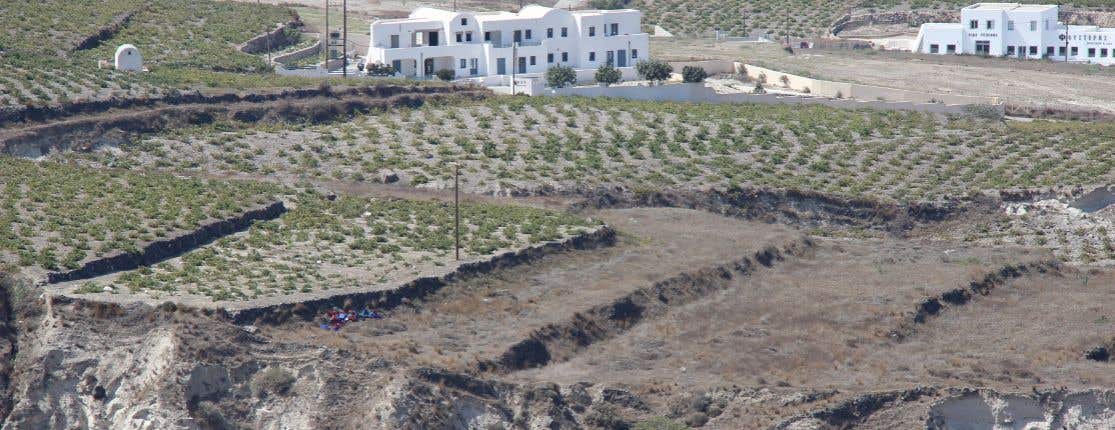Greece

Largely unobserved by the rest of the world, Greece has been modernising her wine industry rapidly. This is particularly thrilling in view of the fact that the Greek wine industry is so ancient and seems determined to avoid the Chardonnay-and-Cabernet-only trap in its modern incarnation. It is quite possible that some of the vine varieties grown today are the same as those experienced by participants in classical symposia (much more hedonistic gatherings than their modern namesakes) and Dionysian revels. (One common and widely spread vine at least owes its name to its Greek origins: Malvasia is a corruption of the name of the Greek port of Monemvasia, through which many ancient sweet Malvasias passed in the Middle Ages.)
Many Greek varieties are extinct or nearly so but the aromatic white Malagousia has been rescued, as has Lagorthi, and Crete’s Vilana. Santorini's Assyrtiko, Roditis and Savatiano are widely planted varieties for white wines and Agiorgitiko, Mavrodaphne, Xynomavro and, to a lesser extent, Limnio are some of the better-known dark-skinned grapes.
Modern Greek wine is very much more than retsina, the aggressively pine resin-flavoured, full-bodied white of blessed taverna memory. North-facing slopes are increasingly valued for their moderating effect on the high summer temperatures in Greece, just as, for the same reason, high-altitude vineyard sites are being replanted. Wineries such as Tsantalis’ new extension at Aghios Pavlos, Kourtakis at Ritsona and Boutari’s outpost on Santorini are some of the world’s most modern and best equipped. Greece now has small, well-funded, quality-at-all-costs winemaking establishments such as Gentilini on the almost Adriatic island of Cephalonia, Ktima Mercouri near Olympia, Ktima Hatzimichalis near Parnassus, and Strofilia not far from Athens (with a useful, eponymous high-quality wine bar in the city itself). Other, more recently founded high achievers include Alpha Estate, Biblia Chora, Gerovassiliou, Kir-Yianni and the Lazaridis.
The vinescape is changing rapidly, but some of the most interesting wines to reach export markets have been the scented dry whites made from Robola grapes on Cephalonia and Gaia’s tinglingly nervy Thalassitis, made from ancient Assyrtiko vines struggling for survival on the black, volcanic island of Santorini. Among wines that attest to Greece’s ability to make well-balanced but truly interesting reds too are firm and oak-aged Náoussa made from Xynomavro in the far north, intensely perfumed Agiorgitiko grown at Némea on the east coast of the Peloponnese, and some interesting experimentation between Thessalonika and the Turkish border to the east. The wines that are probably closest to those made in ancient Greece and those that were shipped around Europe by the Venetians and Genoese are the country’s host of sweet wines such as Muscats of Sámos, Lemnos and Pátras, which also produces some gloriously mellow wood-aged Mavrodaphne. There is undoubtedly, however, more to come – especially as this renaissance in winemaking coincides with a dramatic fall in wine consumption in Greece. Unfortunately this seems to have done nothing to moderate prices and Greek wines too often look like luxuries on export markets.
Some favourite producers: Alpha Estate, Antonopoulos, Biblia Chora, Georgakopoulas, Gerovassiliou, Hatzidakis, Gaia, Hatzimichalis, Kir-Yianni, Mercouri, Papagiannakou, Papaioannou, Sigalas, Wine Art.